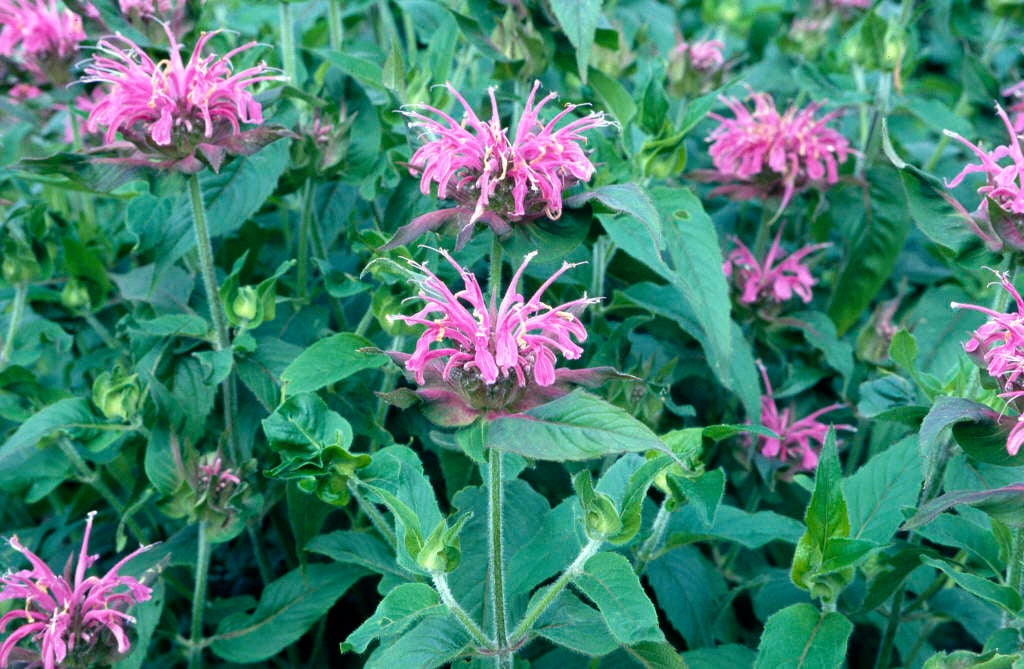Monarda didyma
bergamot
A bushy perennial to 90cm tall, forming a clump of erect stems bearing aromatic, lance-shaped or ovate mid-green leaves, and showy 2-lipped red or pink flowers 3-4cm in length, in one or two dense terminal whorls, from mid to late summer
Other common names
bee balmbee balm tea plant
see morefragrant balm
hare mint
Indian feathers
Indian plume
lad's love
low balm
mountain mint
Oswego tea
Robin-run-around
rose balm
sweet bergamot
Size
Ultimate height
0.5–1 metresTime to ultimate height
2–5 yearsUltimate spread
0.1–0.5 metresGrowing conditions
Moisture
Moist but well–drainedpH
Acid, Alkaline, NeutralColour & scent
| Stem | Flower | Foliage | Fruit | |
| Spring | Green | |||
|---|---|---|---|---|
| Summer | Pink Red | Green | ||
| Autumn | Green | |||
| Winter |
Position
- Full sun
Aspect
South–facing or West–facing or East–facing
Exposure
Exposed or Sheltered Hardiness
H5Botanical details
- Family
- Lamiaceae
- Native to GB / Ireland
- No
- Foliage
- Deciduous
- Habit
- Clump forming
- Genus
Monarda can be annuals or clump-forming herbaceous perennials with aromatic, ovate leaves and terminal whorls of 2-lipped, tubular flowers from summer to early autumn
- Name status
Correct
- Plant range
- N America
How to grow
Cultivation
Grow in moderately fertile, moist but well-drained soil in full sun or light shade. Protect from excessive winter wet and do not allow to dry out in summer
Propagation
Propagate by seed or division in spring
Suggested planting locations and garden types
- Prairie planting
- Cottage and informal garden
- Wildlife gardens
- Flower borders and beds
Pruning
Deadhead regularly then cut stems down to the ground in autumn
Pests
May be susceptible to slugs
Diseases
May be susceptible to powdery mildews
Get involved
The Royal Horticultural Society is the UK’s leading gardening charity. We aim to enrich everyone’s life through plants, and make the UK a greener and more beautiful place.
